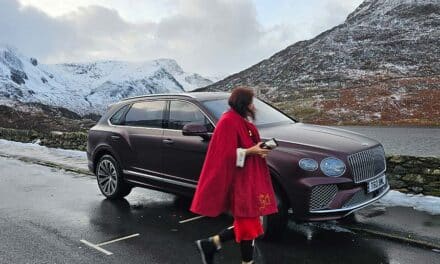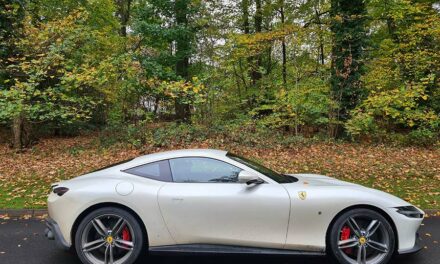There’s something deliciously indulgent about slipping into a vintage fur coat. It’s like draping yourself in a piece of history, a luxurious nod to a time when glamour was synonymous with opulence. But today, fur is a controversial topic, synonymous with animal cruelty, leading to a growing chorus of voices calling for its ban. The fashion world, ever responsive to the zeitgeist, has largely turned its back on new fur. Yet, amidst this shift, vintage fur remains a tantalizing option, especially for those of us who adore a life of luxury and refuse to settle for anything less.
I adore luxury, the kind that oozes opulence from every seam. And let me tell you, nothing says opulence quite like fur. But before you cluck your tongue and brand me a heartless fashionista, let’s talk about the forgotten hero in this debate: vintage fur. Yes, I’m talking about those sumptuous pieces from a bygone era that have already seen the light of day. These coats, scarves, and stoles are waiting for someone like me—and perhaps like you—to give them a new lease on life.

Gucci and Stella McCartney Anti Fur
Brands like Gucci and Stella McCartney have loudly declared their disdain for new fur, aligning with a broader movement that deems it cruel and unnecessary. As much as I respect their stance, I can’t help but feel a twinge of sadness at the thought of these beautiful, timeless pieces being banished to the dark corners of history. It’s as though we’re throwing the baby out with the bathwater, and that, my friends, is simply wasteful. Why not consider upcycling vintage fur instead? After all, the animal has already paid the ultimate price, and letting that fur rot away in a landfill seems a disrespectful end to such a sacrifice.
Vintage fur is the epitome of slow fashion. It’s not about mass production or following fleeting trends. It’s about appreciating the craftsmanship, the history, and the sheer beauty of a piece that has stood the test of time. Unlike the synthetic fur that has flooded the market, vintage fur doesn’t contribute to the plastic pollution problem that plagues our planet. Synthetic fibers may mimic the look of fur, but they fall woefully short when it comes to sustainability. Vintage fur, on the other hand, is biodegradable and, with proper care, can last a lifetime or more.

The fashion industry is currently grappling with its environmental impact, with fast fashion at the forefront of the problem. Brands like Zara and Primark have been forced to reckon with the mountains of unsold clothes that contribute to the colossal waste problem. As they scramble to find ways to recycle denim and other textiles, why aren’t we talking more about the potential of vintage fur as part of this conversation? It’s a ready-made solution to a complex problem, offering a way to honor the past while looking stylish in the present.
Why Buy Vintage Fur
I’ve seen vintage fur coats that are over 20 years old and still look as fabulous as the day they were made. That’s the beauty of fur—it ages gracefully, unlike so many other materials. When I wear a vintage fur piece, I feel like I’m wrapped in a little piece of history, something unique that no one else will have. It’s a form of self-expression, a statement that I value quality, sustainability, and, let’s be honest, a bit of extravagance.
What I love about vintage fur is its versatility. You don’t have to go full-on Cruella de Vil to enjoy the benefits of fur. How about a coat with just a hint of fur trim, or a fabulous scarf that adds a touch of old-world glamour to your outfit? Even in home décor, a vintage fur throw or some plush fur pillows can transform a space from drab to divine. It’s about adding those luxurious touches that elevate your look or your home to something truly special.
Gen Z has been vocal about rejecting fur, and while I admire their commitment to animal welfare, I think they’re missing out on an opportunity to engage with fashion in a more sustainable way. Rather than buying into the trend of faux fur—which, let’s be honest, can look a bit tacky—why not explore the world of vintage fur? It’s the perfect blend of luxury and sustainability, offering a guilt-free way to enjoy the finer things in life.

Upcycling vintage fur isn’t just about fashion; it’s about respect—respect for the animal, for the environment, and for the craft. By reworking these pieces, we’re not just keeping them out of landfills; we’re giving them a new purpose, a new story. And isn’t that what fashion is all about? Telling a story through what we wear, expressing who we are and what we stand for?
There’s something incredibly satisfying about wearing a one-of-a-kind piece. Vintage fur offers that in spades. Each piece has its own history, its own personality. When I slip into a vintage fur coat, I know I’m wearing something that has been loved before, something that carries the weight of its past with elegance. It’s like having a little secret—only I know the journey this coat has been on before it came to me.
But let’s be clear: I’m not advocating for the continued production of new fur. The days of mass-produced fur are over, and rightly so. The future lies in reimagining what’s already out there. We should be grading and collecting vintage fur, recognizing its value, and bringing it back into the fashion fold. Italian fur, in particular, is highly sought after, and many in Italy are coming around to the idea that new fur sales should be a thing of the past. Vintage fur, however, is a different story—one that deserves to be told.
So why not breathe new life into vintage fur? Why not turn these forgotten pieces into something extraordinary? Whether it’s a coat, a scarf, or a throw, vintage fur offers a way to enjoy the luxuries of the past without compromising our values in the present. It’s time to rethink fur, not as a relic of a bygone era, but as a sustainable, stylish option for today’s discerning fashionista.
In the end, it’s about choice—the choice to wear something beautiful, sustainable, and luxurious. Vintage fur is more than just a fashion statement; it’s a way to honor the past while embracing the future. And if you ask me, that’s a choice worth making.















